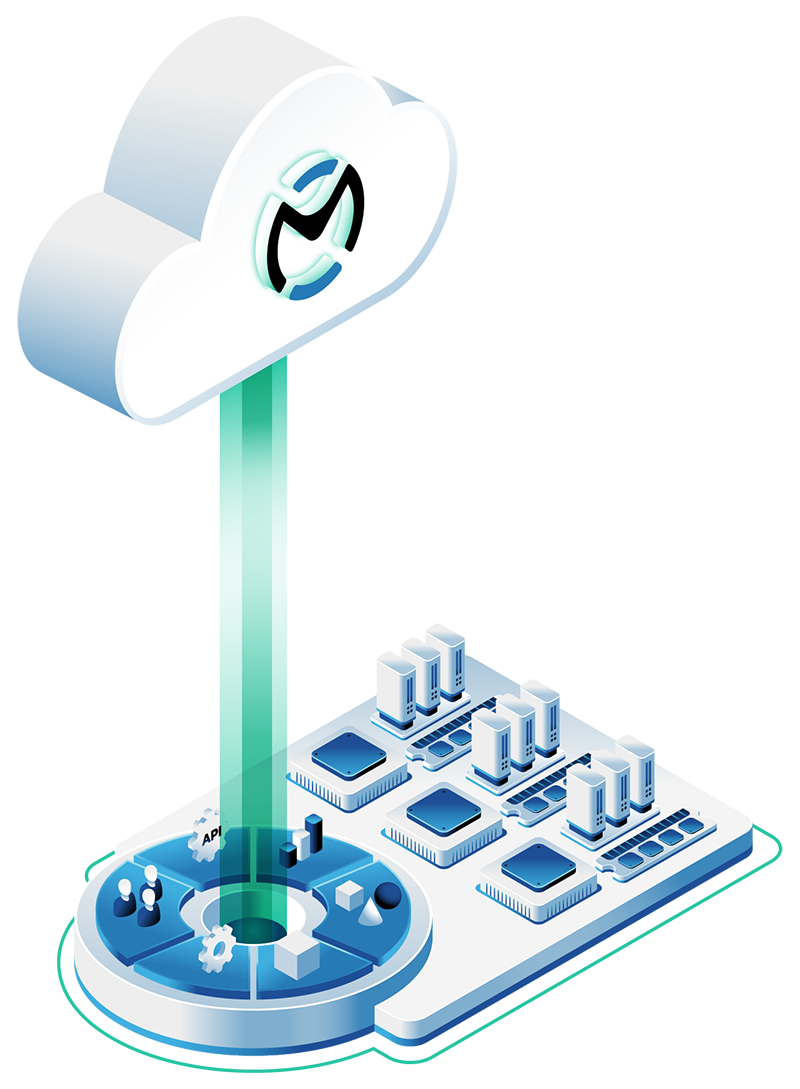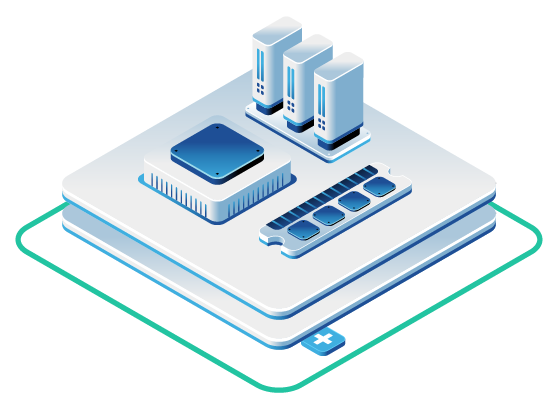In this article
- What Root Access Actually Means for Your Infrastructure
- Why DevOps Teams Need Unrestricted Access
- The Reality of Managing Infrastructure Without Root
- How OpenMetal Enables DevOps Workflows
- IPMI and Hardware-Level Management
- Balancing Access with Security
- Infrastructure as Code and Automation
- Real-World DevOps Use Cases
- Migration and Hybrid Approaches
- The Business Case for Administrative Control
- Getting Started with OpenMetal
- Infrastructure That Empowers Rather Than Restricts
When you’re building modern infrastructure, administrative restrictions can feel like working with your hands tied. You need to customize configurations, install specialized tools, and modify system settings without waiting for approval tickets or wrestling with vendor limitations. That’s where full root access becomes not just helpful, but necessary.
OpenMetal delivers bare metal infrastructure with complete administrative control, giving your DevOps teams the freedom to build, deploy, and manage systems exactly the way they need to.
What Root Access Actually Means for Your Infrastructure
Root access represents the highest level of permissions on your infrastructure. Root access grants users full control over the system, including the ability to modify any file, run all programs, and change system functionalities and security settings. This level of access allows you to perform administrative tasks, install or uninstall software, manage user permissions, and secure your systems against vulnerabilities.
For DevOps teams, this translates into practical capabilities you need every day. You can install system packages, configure Docker and Kubernetes clusters, manage firewall and SSH settings, edit protected system files like /etc/hosts and crontabs, and deploy security tools that require deep system access.
With OpenMetal, you receive 100% of your servers in your VLANs with root ownership. You have complete control to deploy and manage hardware and fully custom virtual machines, networks, firewalls, storage, and backup services remotely.
Why DevOps Teams Need Unrestricted Access
The DevOps philosophy centers on breaking down barriers between development and operations. Restricted access creates friction in that model. Schlomo Schapiro argues that root access correlates with DevOps maturity—teams practicing true DevOps collaboration typically provide broader administrative access because they’ve built the automation, trust, and processes to use it safely.
Traditional public cloud environments impose virtualization constraints that limit what you can do with your infrastructure. You’re working within someone else’s framework, bound by their security models and operational restrictions. When you need to implement custom kernel modules, access hardware-level features, or deploy specialized security configurations, those limitations become roadblocks.
Your team needs the freedom to customize the entire stack. OpenMetal’s bare metal foundation allows you to implement tailored security measures and performance optimizations without vendor-imposed limitations. You gain full control over the software stack from the operating system to the middleware to the application layer.
The Reality of Managing Infrastructure Without Root
Developers consistently cite that working without proper administrative access creates bottlenecks that slow down the entire development cycle. When you need to install a package, configure a service, or troubleshoot a system issue, waiting for someone else to make those changes interrupts your workflow and delays your projects.
Think about common DevOps scenarios: setting up CI/CD pipelines, configuring monitoring tools, deploying containerized applications, or implementing infrastructure as code. Each of these requires system-level permissions. Without root access, you’re filing tickets, waiting for approvals, and explaining technical requirements to people who may not understand the context.
This is more about velocity than simply convenience. Modern software development moves quickly, and infrastructure needs to keep pace. When your team can make changes directly, you eliminate the delays that turn hours into days and days into weeks.
How OpenMetal Enables DevOps Workflows
OpenMetal is architected to support DevOps methodologies with API-first functionality. Your infrastructure resources are available via API with powerful CLI access and support for infrastructure-as-code tools like Terraform and Heat.
The platform provides extensive documentation for Terraform integration, allowing you to write out your cloud’s infrastructure as code. This means you can implement Git-based infrastructure workflows where every change flows through pull requests, giving you version control, code review, and audit trails for infrastructure changes.
Your team can spin up a complete private cloud environment in 45 seconds. This rapid deployment capability supports proof-of-concept environments, development sandboxes, and testing infrastructure without the traditional procurement delays that hinder DevOps agility. When you can create and destroy environments quickly, you encourage experimentation and innovation.
IPMI and Hardware-Level Management
Beyond operating system access, OpenMetal provides IPMI (Intelligent Platform Management Interface) access for hardware-level management. This gives you control over your servers even when the operating system isn’t responding.
With IPMI, you can remotely power cycle servers, access system consoles, monitor hardware health, and install custom OS images. This level of access proves invaluable when troubleshooting complex issues or managing bare metal provisioning workflows.
Many of OpenMetal’s bare metal servers support advanced features like Intel TDX confidential computing, custom GPU configurations, and direct NVMe storage access. These capabilities enable your DevOps teams to optimize infrastructure for specific workload requirements whether you’re running machine learning models, high-performance databases, or latency-sensitive applications.
Balancing Access with Security
Having full root access doesn’t mean abandoning security practices. In fact, it enables better security implementations because you control the entire stack.
Root access best practices include using sudo or similar tools instead of logging directly as root, limiting root access by only granting it to users who absolutely require it, implementing strong authentication methods like multi-factor authentication, and regularly reviewing access rights.
The reality of infrastructure automation adds nuance to these guidelines. DevOps architects recognize that even dedicated automation users typically require passwordless sudo access for comprehensive system management, making them functionally equivalent to root from a permission perspective. The security value comes not from permission limitations, but from establishing clear separation of concerns, maintaining audit trails for different access patterns, and implementing the “provision then lock” security pattern.
This pattern works particularly well with bare metal infrastructure: use privileged access for initial setup, implement comprehensive security measures, harden SSH access through key-only authentication and IP restrictions, then remove or severely restrict the initial privileged access paths. The approach establishes narrow, purpose-specific access for future maintenance while maintaining the administrative control needed during critical configuration phases.
With OpenMetal’s platform, you implement these security measures on your terms. You can configure SSH key-based authentication, set up custom firewall rules, implement network segmentation through VLANs, deploy intrusion detection systems, and establish your own audit logging policies.
This control extends to compliance requirements. When you need to meet specific security standards or regulatory frameworks, you can implement the exact controls your auditors require without negotiating with a cloud provider about what’s possible within their infrastructure.
Infrastructure as Code and Automation
Modern DevOps practices rely heavily on automation. When you have full administrative access, you can implement sophisticated automation workflows without running into permission barriers.
Configuration management tools like Ansible require appropriate access levels to function properly. DevOps teams running Ansible typically connect to systems as a non-root user and use sudo to escalate privileges when needed. This approach follows security best practices while maintaining automation capabilities.
However, infrastructure context matters. The choice between root access and dedicated automation users depends on your deployment patterns. For ephemeral infrastructure with short lifecycles, direct root access during initial provisioning can simplify workflows—you configure everything, harden security, then disable root access as the final step. For persistent infrastructure requiring ongoing management, dedicated automation users with appropriate sudo permissions provide better scalability and team collaboration.
OpenMetal’s platform accommodates both approaches because you control the entire access model. You decide whether to implement direct root provisioning for rapid deployment cycles or establish dedicated service accounts with granular permissions for long-term infrastructure. The bare metal foundation means you’re not constrained by a provider’s pre-configured access patterns.
With OpenMetal’s API and CLI access, you can integrate infrastructure provisioning directly into your CI/CD pipelines. Your automated tests can spin up complete environments, run test suites, and tear down resources, all without manual intervention.
This automation extends to disaster recovery scenarios. When you control the entire stack, you can implement custom backup strategies, test recovery procedures thoroughly, and automate failover processes. You’re not dependent on a vendor’s backup service or recovery timeline.
Real-World DevOps Use Cases
Consider a platform engineering team building internal developer platforms. They need to provide self-service infrastructure to development teams while maintaining security and cost controls. With full root access on OpenMetal, they can build custom APIs, implement resource quotas, configure automated provisioning, and establish governance policies all tailored to their organization’s specific needs.
Or take a team running high-performance computing workloads. They need direct NVMe storage access, custom network configurations, and the ability to tune kernel parameters for their specific applications. OpenMetal’s bare metal infrastructure with root access makes these optimizations straightforward.
The flexibility extends to different deployment patterns. Infrastructure teams working with mixed environments can implement context-appropriate access models: ephemeral development environments might use streamlined root provisioning with automated hardening, while production infrastructure maintains dedicated service accounts with granular permissions. OpenMetal’s platform doesn’t impose a one-size-fits-all access model, you design the approach that matches your operational requirements.
Organizations building DevOps cultures benefit from infrastructure that doesn’t fight against their processes. When your infrastructure tools align with your team’s workflow, you remove friction and enable the collaboration that makes DevOps successful.
Migration and Hybrid Approaches
Many teams start their cloud journey on public cloud platforms and later discover the limitations. Migrating workloads requires infrastructure that matches or exceeds your current capabilities.
OpenMetal provides the administrative access to make migrations straightforward. You can replicate your existing configurations, implement the same security controls, maintain your automation scripts, and preserve your operational procedures. The transition doesn’t require redesigning your infrastructure to fit into someone else’s model.
For hybrid deployments, full root access ensures consistency across environments. Your team uses the same tools, follows the same processes, and maintains the same security posture whether they’re managing on-premises infrastructure, public cloud resources, or OpenMetal private cloud environments.
The Business Case for Administrative Control
Beyond technical capabilities, full root access affects your business outcomes. When infrastructure becomes a competitive advantage rather than a constraint, your organization moves faster.
- Reduced time-to-market: Teams deploy new features without waiting for infrastructure approvals or workarounds for platform limitations.
- Lower operational costs: Automation eliminates manual intervention and reduces the headcount needed for infrastructure management.
- Better resource utilization: Fine-tuned configurations and direct hardware access mean you get more performance from each server.
Organizations comparing public and private cloud options often find that administrative control significantly impacts total cost of ownership. When you optimize infrastructure for your specific workloads, you avoid overprovisioning and reduce waste.
Getting Started with OpenMetal
OpenMetal’s platform is designed for DevOps teams who need infrastructure that works the way they do. You get dedicated bare metal servers with full root access, deployed in your own VLANs with complete isolation.
The 45-second cloud deployment capability means you can start immediately. Create an account, configure your infrastructure requirements, and deploy. Your team gets full administrative access from day one.
The platform includes comprehensive documentation, API references, and Terraform modules to accelerate your implementation. Whether you’re optimizing CI/CD pipelines, building remote development environments, or exploring SaaS infrastructure options, OpenMetal provides the foundation your DevOps team needs.
Infrastructure That Empowers Rather Than Restricts
 The difference between restricted cloud access and full root control fundamentally changes what your team can accomplish. OpenMetal delivers infrastructure that empowers your DevOps practices rather than fighting against them.
The difference between restricted cloud access and full root control fundamentally changes what your team can accomplish. OpenMetal delivers infrastructure that empowers your DevOps practices rather than fighting against them.
You get complete administrative control, bare metal performance, rapid deployment capabilities, and the flexibility to implement your infrastructure exactly as needed. Your team can focus on building great products instead of working around platform limitations.
Real organizations are using OpenMetal to build their infrastructure on their terms. They’re deploying faster, operating more efficiently, and delivering better results because their infrastructure enables rather than restricts.
When your infrastructure comes with full root access, you’re not just renting servers, you’re gaining the foundation for modern DevOps practices. That’s the OpenMetal difference.
Ready to see what your team can build with complete infrastructure control? Calculate your deployment and discover how OpenMetal lowers your total cost of ownership while giving you the administrative freedom your DevOps team needs.
Schedule a Consultation
Get a deeper assessment and discuss your unique requirements.
Read More on the OpenMetal Blog


































